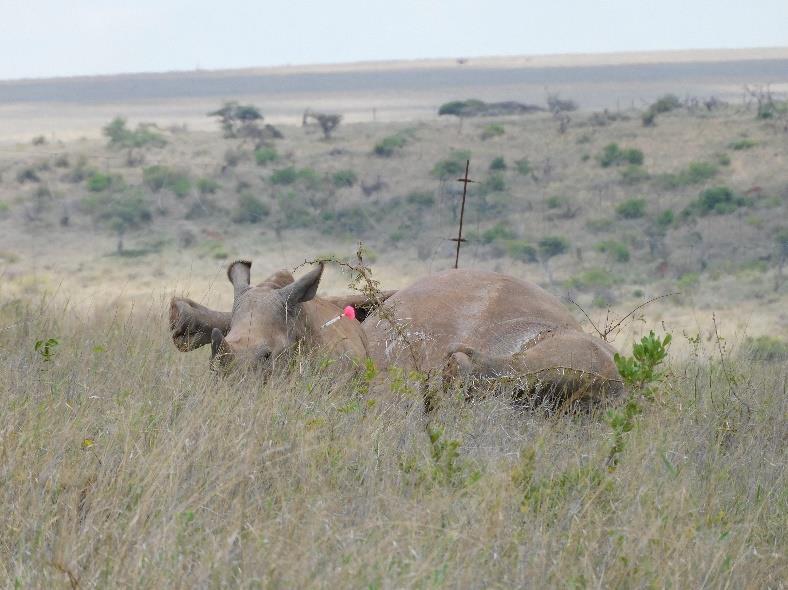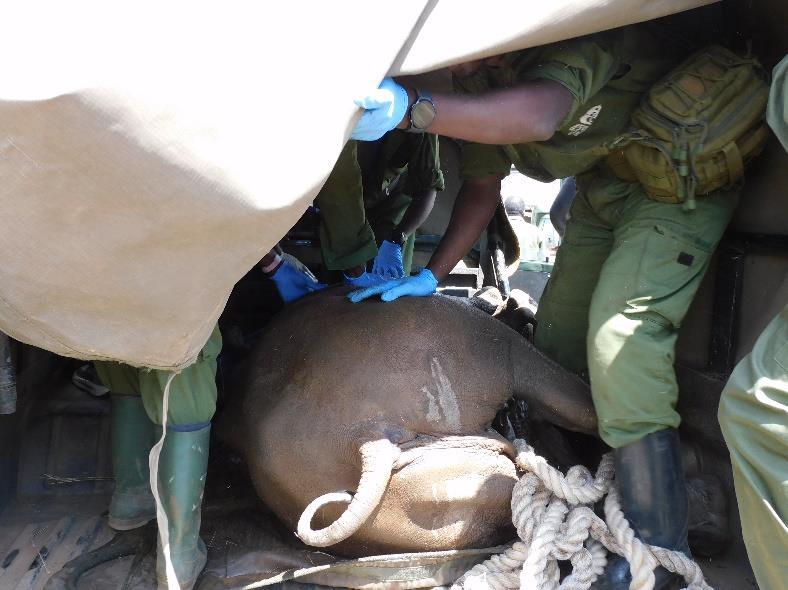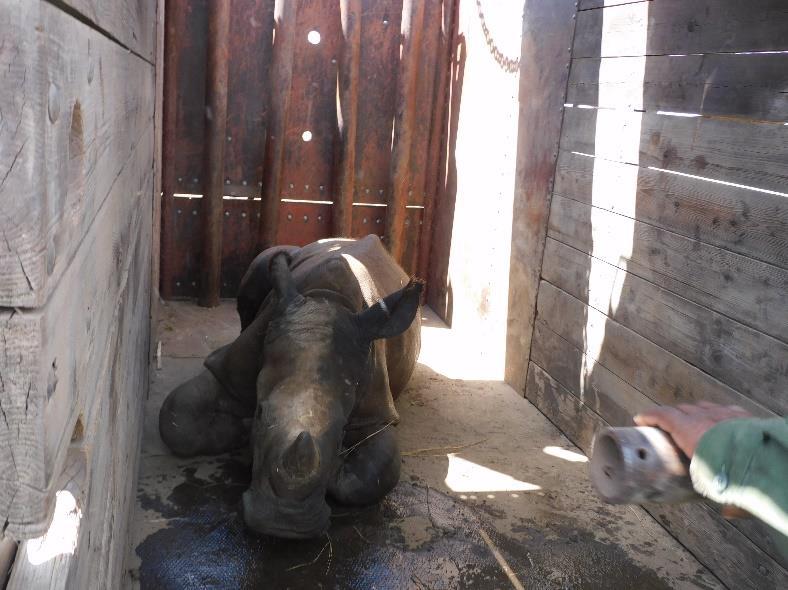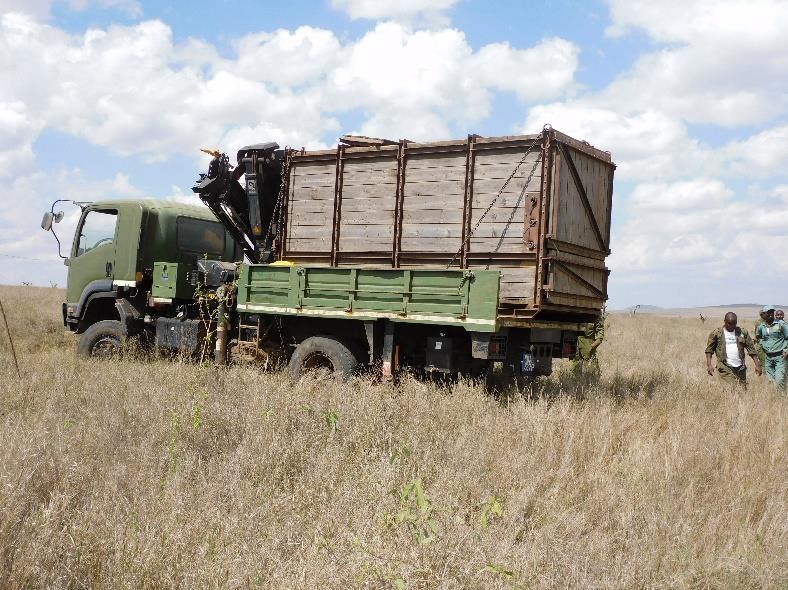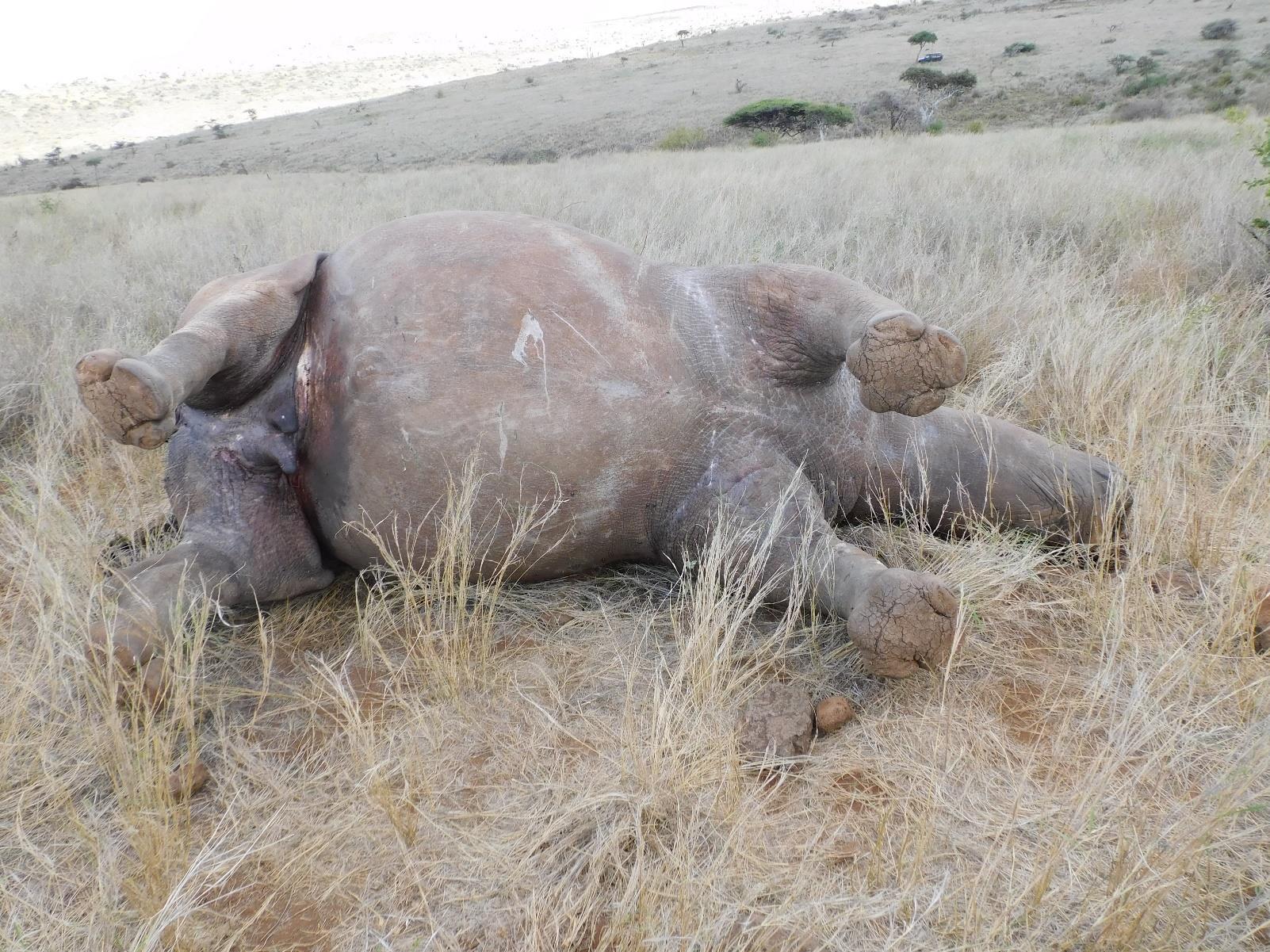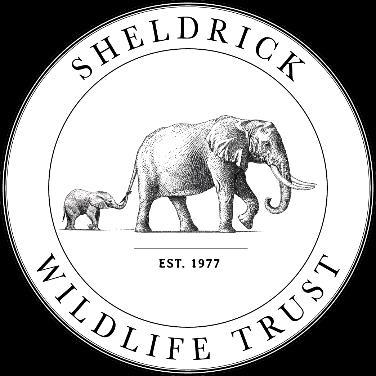
SWT/KWS MERU MOBILE VETERINARY UNIT
AUGUST 2025



7 Cases in August 2025
August 2025 Report by Dr.
Aminga Duncan

2 HWC Cases
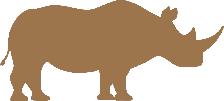
3 Rhino Cases
The month of August unfolded with a blend of contrasting weather patterns across the Meru ecosystem. The early weeks were marked by sweltering daytime heat accompanied by dusty, windy evenings that swept across the plains. As the month drew to a close, the landscape shifted into a cooler phase, with intermittent light showers and overcast skies bringing relief and a sense of renewal to both wildlife and vegetation. During the month, the SWT/KWS Meru Vet Unit responded to 7 cases, involving a zebra with a fractured leg, postmortems on 2 elephants suspected to have been victims of human-elephant conflict and a disease investigation following reports of wildlife mortalities associated with a skin condition. In addition to these interventions, the veterinary team also participated in the translocation of ten white rhinos from Meru NP, Lewa Wildlife Conservancy, and Borana Conservancy to the newly established Loisaba Rhino Sanctuary.
Acknowledgement
The success of our interventions was made possible through the steadfast generosity of Sylvie Chantecaille, whose continued support through the Sheldrick Wildlife Trust has strengthened the operations of the Unit. We are equally grateful to the Kenya Wildlife Service for their strategic leadership and logistical guidance. We also extend our sincere appreciation to our conservation partners, including the Born Free Foundation and the Wajir Giraffe Sanctuary, for their vital assistance during interventions. Their dedication is deeply valued. Finally, we acknowledge the many individuals who gave their time, expertise, and support throughout the interventions. Your commitment to wildlife welfare is invaluable.
Case Details
5-Aug-25
11-Aug-25
15-Aug-25
August 2025
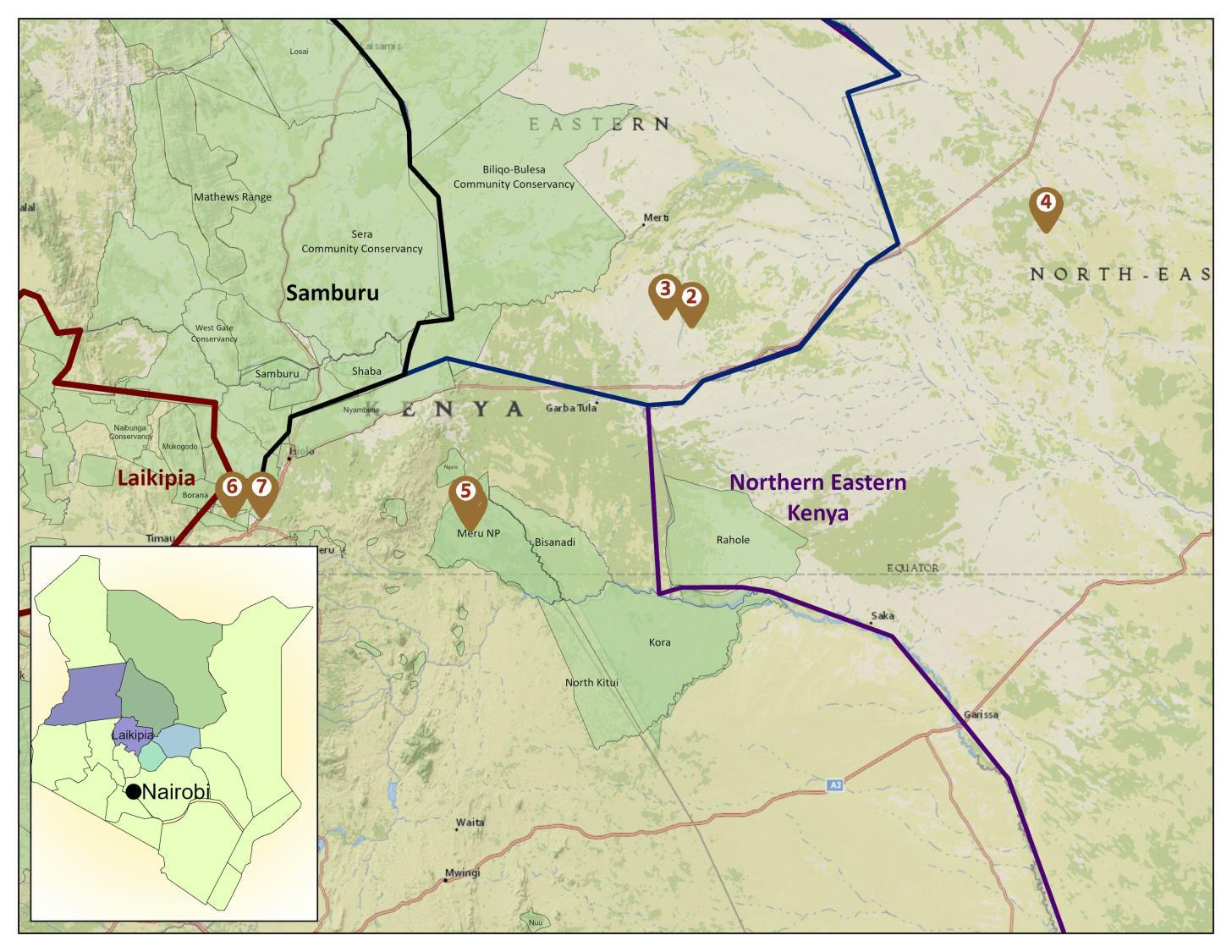
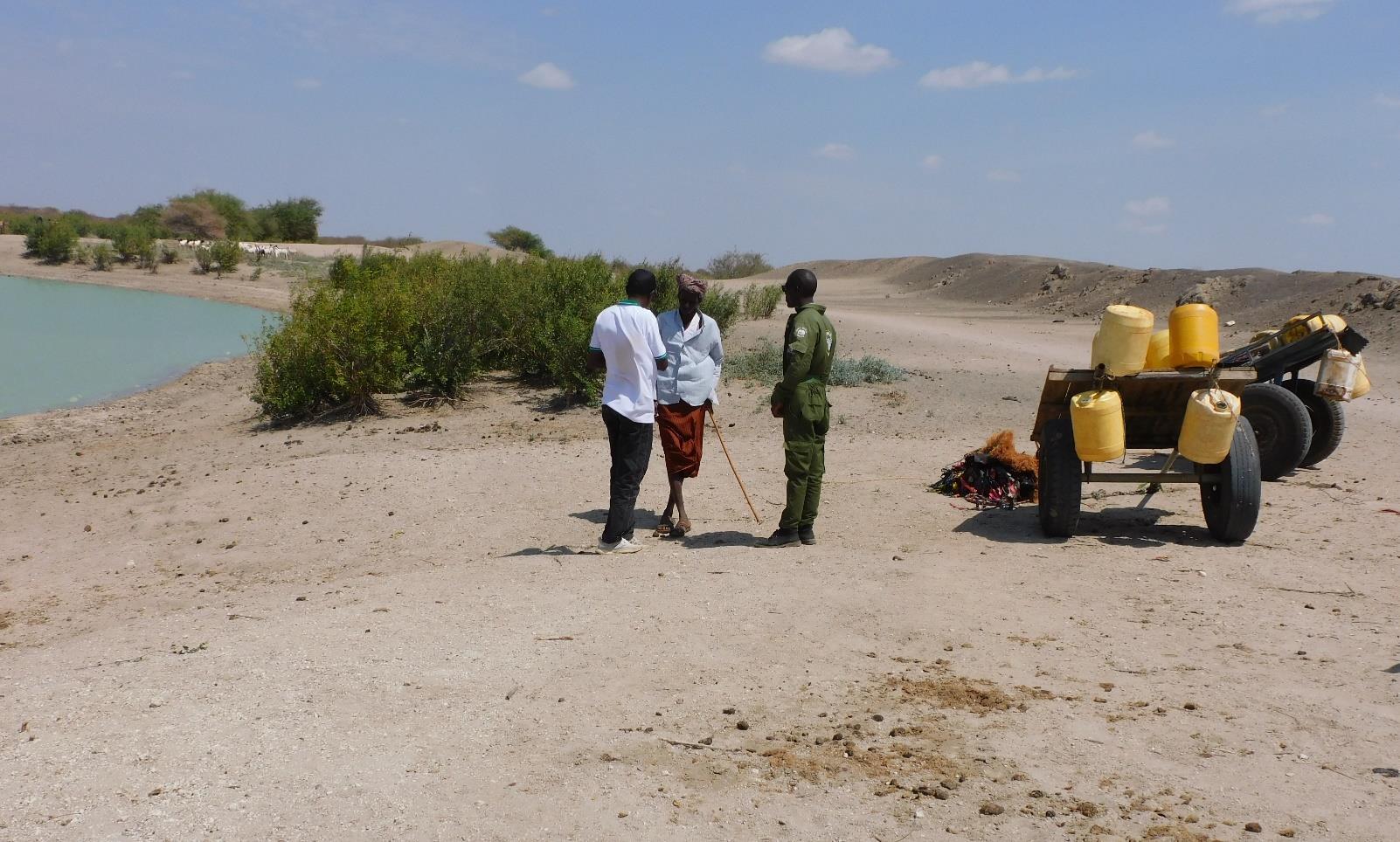
Zebra
Natural Causes
On the mid-morning of August 5th, while on routine patrol, the Vet Unit received a distress report from the Born Free Foundation team. They had sighted a juvenile plains zebra lagging behind its herd due to marked lameness, with suspicion of a fractured hind limb. Aware of the pain and distress the young animal was likely enduring, the team immediately altered their route and proceeded to the reported location.

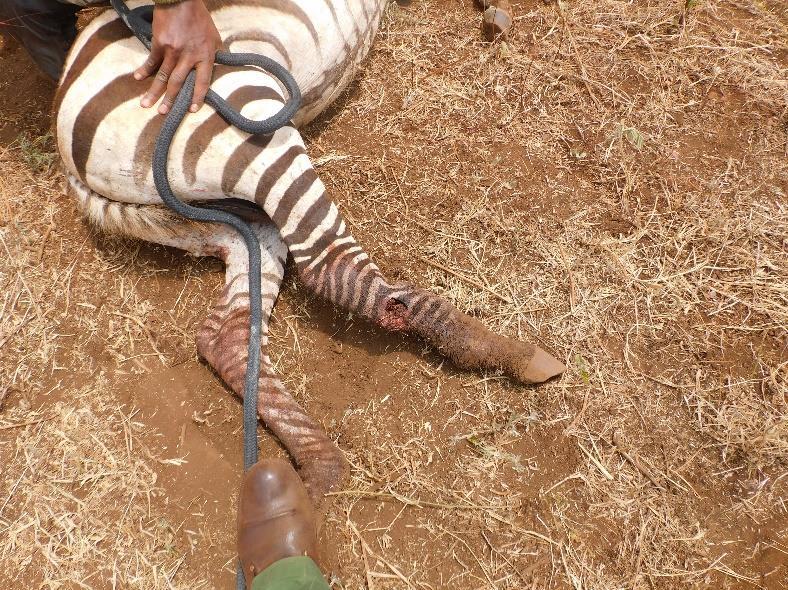
Immobilisation, examination and treatment
Upon arrival, the zebra was found in a group of ten individuals, showing obvious signs of severe pain. Closer examination revealed that it was unable to use its right hind limb due to a complete open fracture.
The zebra was carefully approached using a vehicle and, after a brief chase, was manually restrained with ropes. To minimize stress, it was blindfolded to prevent visual excitation, and water generously doused on him to aid in thermoregulation before the clinical examination commenced. The assessment confirmed that the animal had sustained a complete open fracture of the cannon bone on the right hind limb.
Prognosis
Given the grave prognosis and to alleviate further pain and suffering, the juvenile was humanely euthanized. .
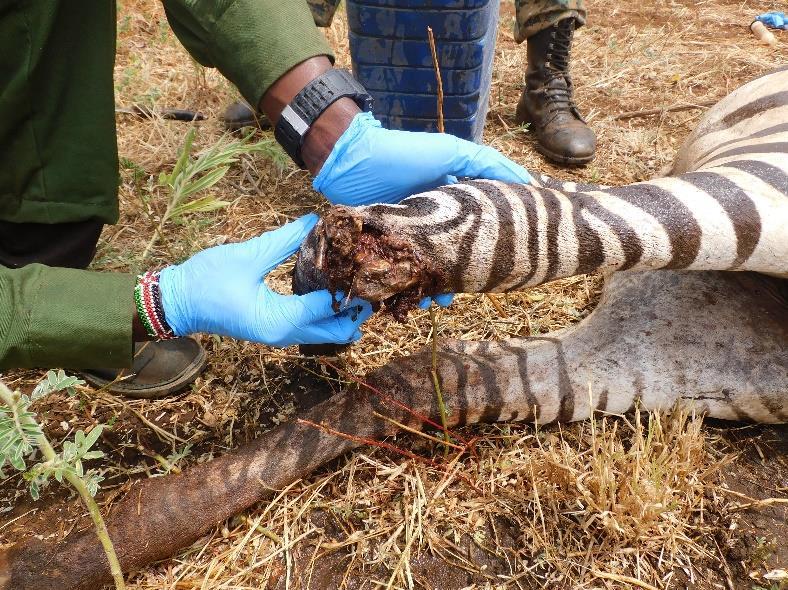

Human-Wildlife Conflict Eldera, North Eastern Kenya
The Vet Unit received a report of an adult elephant carcass sighted in Kuri area, Eldera Location, within Garbatulla Conservancy. The unit travelled to the site and carried out a detailed necropsy.
Postmortem examination
The carcass was found lying in right lateral recumbency and in the active decay stage of decomposition. The elephant was assessed to have been in fair body condition prior to death and both tusks were intact. Clinical history indicated that the animal had been observed heavily limping around watering areas several days prior. A metal detector produced a positive result for metallic foreign bodies lodged within the dorsal cervical region and on the lateral aspect of the right forelimb. Further examination revealed a penetrating projectile wound approximately 20cm deep in the dorsal cervical region. Significant haemorrhage was noted within the muscle tissues of the left shoulder and a comminuted fracture of the humerus resulting from the gunshot. A bullet fragment was recovered embedded within the triceps muscles of the left forelimb. Both tusks were recovered from the carcass and transferred to the Kenya Wildlife Service G Coy Headquarters for safe custody.
Cause of death
Given the location of the carcass and the prevailing circumstances, it is suspected that the cow was an unfortunate victim of human–elephant conflict arising from competition over natural resources in the area.

Elephant
Human-Wildlife Conflict Eldera, North Eastern Kenya
The Meru Mobile Veterinary Unit received a report of a juvenile elephant carcass sighted in the Belgesh area within Garbatulla Conservancy. The unit was promptly assigned to conduct a post-mortem examination
Postmortem examination
The carcass was found lying in left lateral recumbency and was in an advanced stage of decomposition. Extensive scavenging was also noted across the entire carcass. Tusks were absent and appeared to have been forcibly removed. Obscured tool marks observed on the maxillary bone and zygomatic arch indicated tusk extraction using a sharp implement. External examination of the remaining tissues revealed a gunshot wound on the right flank, prompting the use of a metal detector, which confirmed the presence of an embedded metallic object. Due to the advanced state of tissue decomposition, the bullet trajectory could not be accurately determined. A suspected exit wound was observed in the lumbar region, making bullet retrieval unsuccessful. Tissue samples were collected for DNA profiling and forensic analysis.
Cause of death
The advanced stage of decomposition limited the outcome of the autopsy; however, the findings indicate gunshot injuries as the cause of death. Given the location of the carcass within community areas, it is suspected that the elephant was a victim of human–wildlife conflict
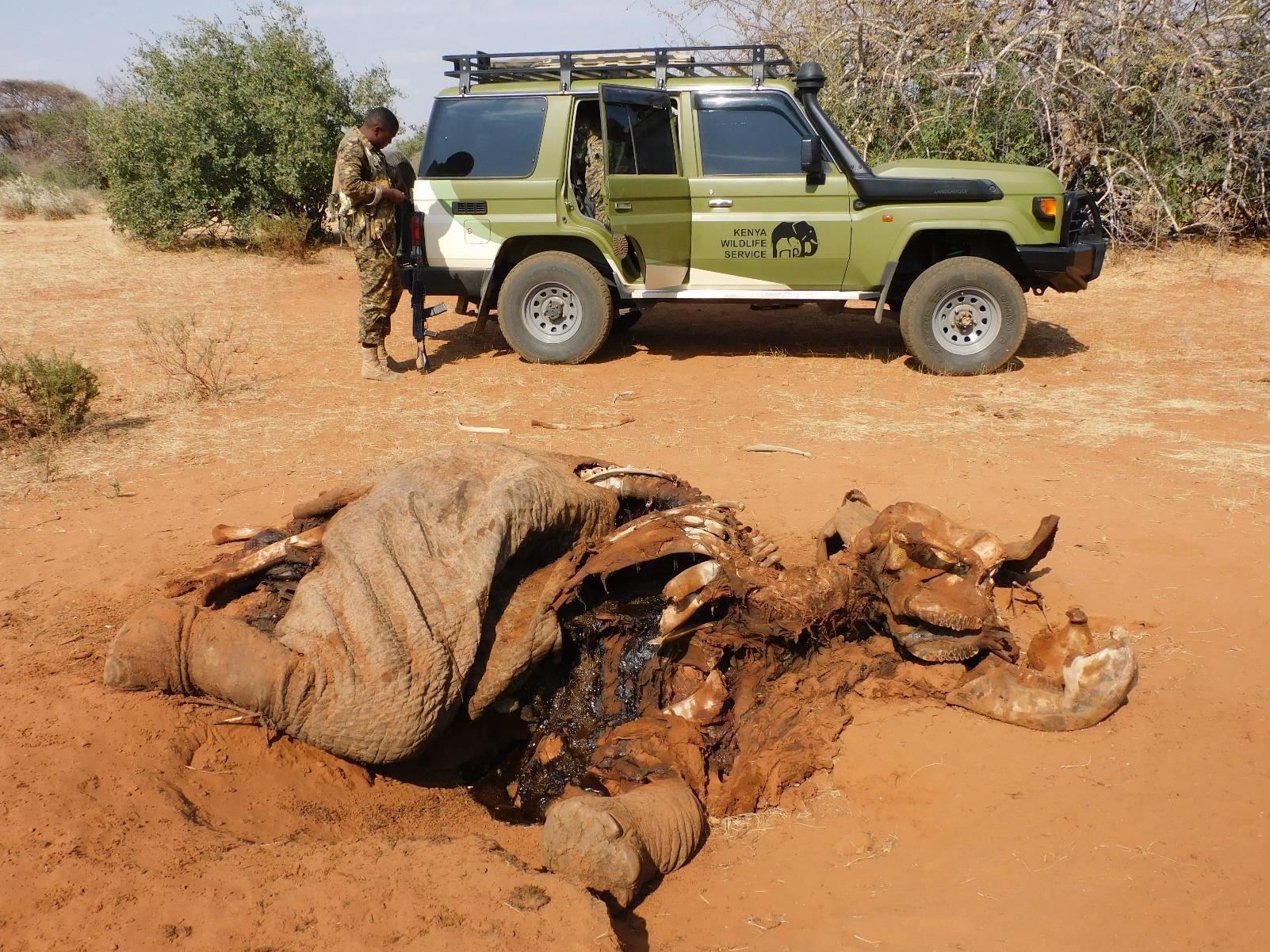
Giraffe Research/Survey
Wajir, Samburu
Following reports of giraffe mortalities in Wajir County, where the affected animals were observed with skin encrustations, alopecia, and weakness prior to death; clinical signs consistent with sarcoptic mange infestation, the Vet Team was tasked with conducting a disease investigation.
Research/Survey
The team visited locations within Wajir County where giraffe mortalities had been reported. Despite the reports, only one juvenile giraffe carcass was located, and skin scrapings were collected for laboratory examination. All other giraffes observed were in fair to good body condition, with no visible signs of skin disease. Giraffe sightings were, however, limited due to the vast landscape. Other wildlife species and livestock were generally in good body condition. The region was experiencing a dry spell and forage, and water resources were limited, forcing livestock and wildlife to travel long distances in search of resources.
Recommendations
The scarcity of resources predisposes giraffes to skin conditions due to compromised immunity. Additionally, congregation of animals at limited watering points creates a higher risk of disease transmission. To mitigate further mortalities and disease spread, it is recommended that additional watering points be established, feed supplementation be provided, and prompt reporting of any sick or affected animals be encouraged to enhance the overall health and resilience of wildlife in the region.




White Rhino Translocation
Lewa Conservancy
Kenya ranks third in Africa in terms of rhino populations. To expand habitat and support the growth of white rhino numbers, the Kenya Wildlife Service, in collaboration with partner conservancies, undertook the translocation of 10 white rhinos from Meru National Park, Lewa Wildlife Conservancy, and Borana Conservancy to the newly established rhino sanctuary at Loisaba Wildlife Conservancy.
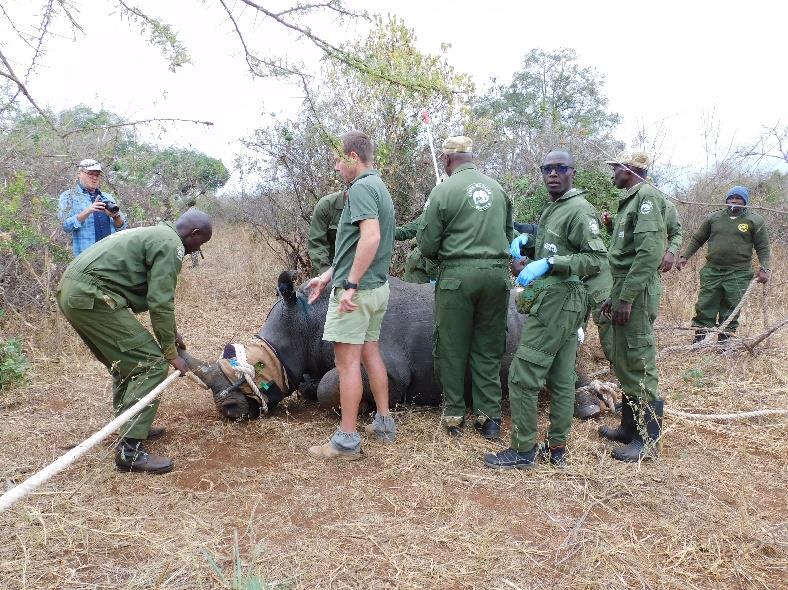

Immobilisation
The rhinos were darted from the Lewa Wildlife Conservancy helicopter using a combination of 4mgs Etorphine and 15mgs Azaperone for individuals aged around 6 years, and 5mgs Etorphine with 20mgs azaperone for rhinos aged 12 years and above, particularly bulls. Once the immobilizing drugs took effect, the veterinary ground team swiftly moved in to secure the animals.
Each rhino was blindfolded to reduce visual stimulation and prevent ocular injury, and water was generously applied to aid in thermoregulation. To stabilize the animals and counter the adverse effects of Etorphine, 15mgs Butorphanol were administered intravenously. Oxygen supplementation was provided, and vital parameters including temperature, respiration, and blood oxygen saturation (SpO₂) were continuously monitored.


Relocation
For unnotched rhinos, ear notching was conducted to facilitate individual identification during posttranslocation monitoring. Roller tags were also fitted to the ears, while transmitters and microchips were implanted.
After all procedures were completed, diluted Diprenorphine was administered intravenously in a ratio relative to the etorphine dose. The animals were then guided using ropes and a prodder into transport crates, followed by a second dose of diprenorphine (two to three times the initial Etorphine dose) to fully reverse the immobilization. Continuous monitoring was undertaken throughout the journey, with supplementary Diprenorphine administered where signs of re-narcotization occurred.
At the release site in Loisaba widlife Conservancy, the anaesthesia was finally reversed with an intramuscular injection of 100mg Naltrexone. All rhinos were successfully released, and they are expected to adapt well to the new sanctuary, contributing to the growth and long-term stability of Kenya’s national white rhino population


